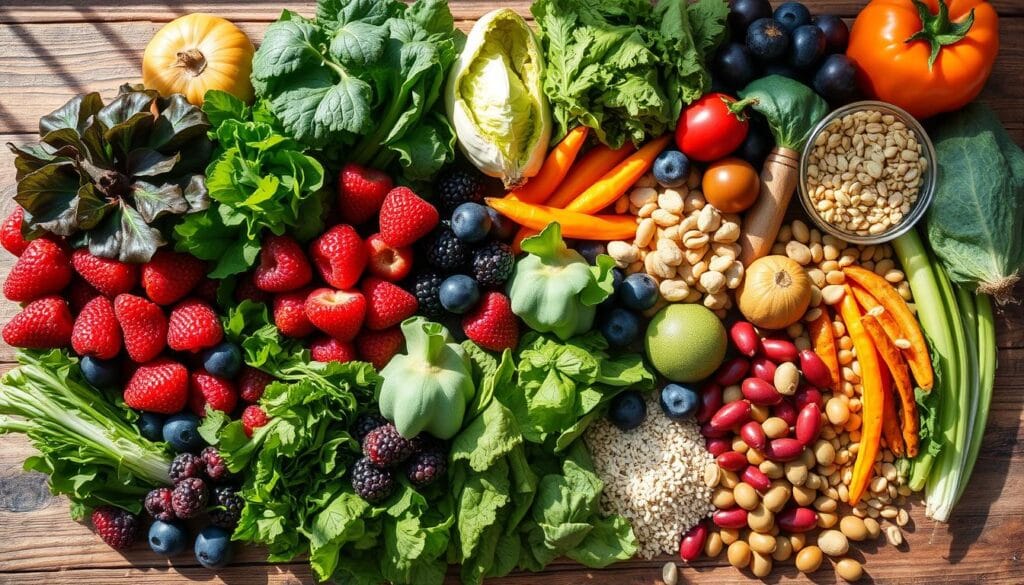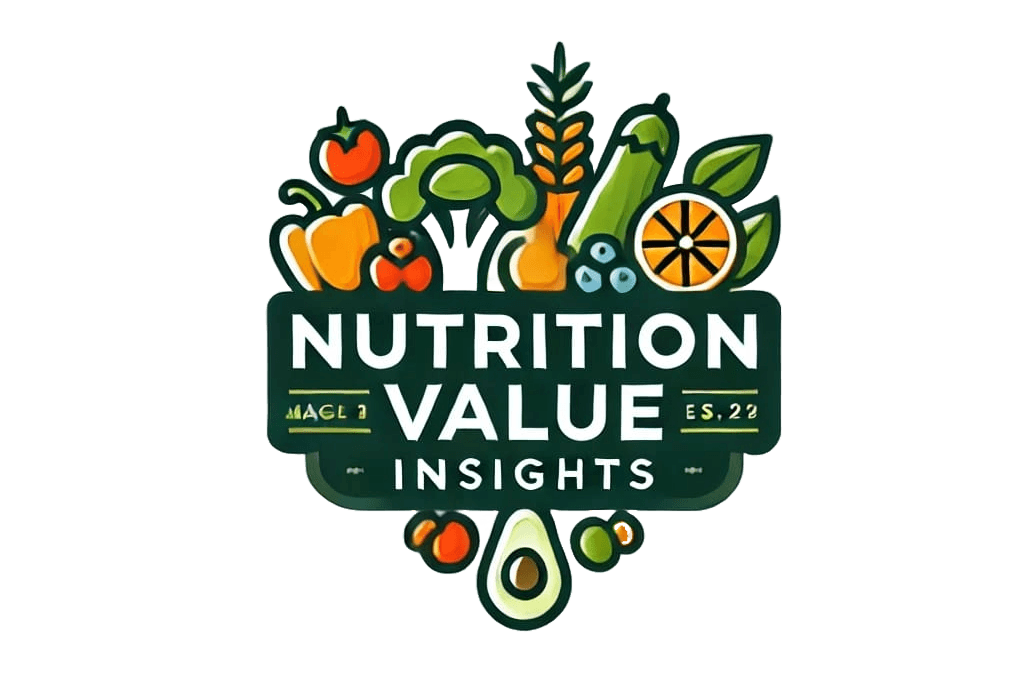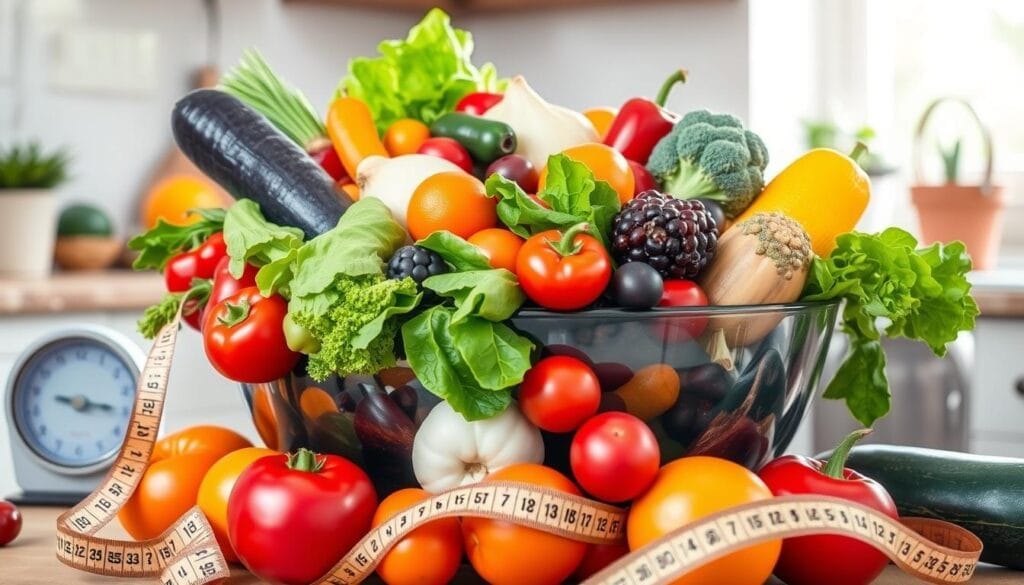Volume Eating for Weight Loss: A Sustainable Approach to Feeling Full and Losing Weight
Volume eating is a new way to lose weight that’s getting a lot of attention. It’s all about eating foods that are high in volume but low in calories. This helps you feel full and satisfied, which is great for managing your weight.
By learning about volume eating and how to add it to your diet, you can start losing weight in a healthy way. This method is not just about cutting calories. It’s about eating foods that make you feel good and support your health.

Table of Contents
Volume Eating for Weight Loss?
Volume eating is a way to lose weight by eating foods that are filling but not too many calories. It’s about eating foods that are full of nutrients but not too high in calories. This lets you eat more without gaining too much weight.
Exploring the Concept of High-Volume, Low-Calorie Foods
High-volume, low-calorie foods are the heart of volume eating. These foods are full of water, fiber, and nutrients but have fewer calories. Fruits, veggies, lean proteins, and whole grains are great examples. Eating these foods helps you feel full and satisfied, which is good for managing your weight info nutrition.
The Benefits of Volume Eating for Weight Management
Volume eating is great for losing and keeping weight off. It makes you feel full on fewer calories, making it easier to stick to a diet. Plus, these foods are full of vitamins, minerals, and fiber, which are good for your health.
| Benefits of Volume Eating | Explanation |
|---|---|
| Promotes Feelings of Fullness | The high water and fiber in volume foods make you feel full, reducing hunger and cravings. |
| Supports Calorie Deficit | Choosing low-calorie, high-volume foods lets you eat fewer calories while still feeling full. |
| Provides Nutrient-Dense Nourishment | Volume foods are packed with vitamins, minerals, and fiber, boosting your health. |
Adding volume eating to your weight management plan can be a smart and lasting choice. It helps you lose weight and keep a healthy lifestyle.
Volume Eating for Weight Loss
Adding volume eating to a calorie-controlled diet can change the game for losing weight. By choosing high-volume, low-calorie foods, you can feel full on fewer calories. This helps you lose weight slowly and healthily.
Prioritizing High-Volume, Low-Calorie Foods
The secret to volume eating for weight loss is to pick foods that are full of nutrients but low in calories. These include:
- Vegetables like leafy greens, cucumbers, and broccoli
- Fruits such as berries, citrus, and melon
- Lean proteins like chicken, fish, and tofu
- Whole grains like quinoa, oats, and brown rice
By eating these foods, you can have bigger, more filling meals while still keeping your calorie intake low.
Balancing Calorie Intake and Volume Eating
Volume eating makes you feel full and happy, but you also need to eat fewer calories to lose weight. Work with a dietitian or use an app to track your calories. This way, you can eat plenty of filling foods while staying within your calorie limit. This balanced method helps you lose weight without feeling hungry or deprived.

Remember, finding the right balance is key to successful volume eating for weight loss. By focusing on nutrient-rich, high-volume foods and keeping your calorie intake in check, you can reach your weight loss goals. You’ll feel full and have plenty of energy along the way.
Nutrient-Dense Foods for Volume Eating
For weight loss through volume eating, focus on nutrient-dense foods. These foods are high in volume but low in calories. They make you feel full and give your body important nutrients.
Volume eating lets you eat more without too many calories. Adding nutrient-dense foods to your meals and snacks keeps you full without guilt.
Nutrient-Dense Vegetables for Volume Eating
- Leafy greens (spinach, kale, arugula)
- Cruciferous vegetables (broccoli, cauliflower, Brussels sprouts)
- Cucumbers
- Tomatoes
- Bell peppers
Nutrient-Dense Fruits for Volume Eating
- Berries (blueberries, raspberries, strawberries)
- Citrus fruits (oranges, grapefruits)
- Melons (watermelon, cantaloupe)
- Apples
- Pears
| Nutrient-Dense Food | Nutrient Profile | Calorie Content (per 100g) |
|---|---|---|
| Spinach | High in vitamins A, C, K, and folate | 23 calories |
| Broccoli | Rich in vitamins C, K, and fiber | 34 calories |
| Blueberries | High in antioxidants and vitamin C | 57 calories |
| Salmon | Excellent source of protein and omega-3 fatty acids | 206 calories |
Adding these nutrient-dense foods to your volume eating plan nourishes your body. It also helps you reach your weight loss goals.

Creating Satisfying Meals with Volume Foods
Volume eating for weight loss doesn’t mean you have to give up taste or satisfaction. By using low-calorie, high-volume ingredients, you can make meals that are both healthy and filling.
Strategies for Bulking Up Meals with Low-Calorie Ingredients
To master volume eating, learn to add bulk to your meals with low-calorie foods. Include lots of leafy greens, non-starchy veggies, and lean proteins like chicken or eggs. These foods are packed with nutrients but low in calories, allowing you to eat more without gaining weight.
Recipes and Meal Ideas for Volume Eaters
Here are some tasty, volume-friendly recipes and meal ideas to try: – Grilled chicken breast with roasted broccoli and a side salad – Vegetable stir-fry with quinoa and toasted almonds – Baked salmon over steamed spinach and roasted sweet potato cubes – Turkey chili with diced tomatoes, bell peppers, and low-fat cheese – Greek yogurt parfait with fresh berries and granola These strategies and recipes will help you enjoy healthy, filling meals. They support your weight loss goals without making you feel hungry or deprived.
FAQ
What is volume eating?
Volume eating is a way to lose weight by eating foods that are high in volume but low in calories. This helps you feel full and supports a healthy calorie deficit. It’s about choosing foods that give you a lot of volume but not too many calories, making it easier to manage your diet.
What are the benefits of volume eating for weight loss?
The main benefits of volume eating for weight loss are:
- It makes you feel full and satisfied, so you eat less without feeling hungry
- It helps you create a calorie deficit, which is key for slow, steady weight loss
- It provides you with nutrient-rich foods, ensuring you get all the vitamins and minerals you need
How can I incorporate volume eating into a calorie-controlled diet?
To add volume eating to a calorie-controlled diet, focus on eating foods that are high in volume but low in calories. Here’s how:
- Make half your plate non-starchy vegetables
- Choose fruits and vegetables as snacks because they’re high in volume and low in calories
- Add lean proteins and whole grains to your meals for balance and satisfaction
- Stay away from foods that are high in calories but low in volume, as they can lead to overeating
What are some examples of nutrient-dense, volume-friendly foods?
Some great examples of nutrient-dense, high-volume, low-calorie foods for volume eating are:
- Non-starchy vegetables like spinach, broccoli, cauliflower, and zucchini
- Fruits such as berries, citrus fruits, melons, and stone fruits
- Lean proteins like chicken breast, turkey breast, fish, and tofu
- Whole grains like quinoa, brown rice, oats, and whole-wheat bread
- Legumes like lentils, chickpeas, and black beans
How can I create satisfying, volume-friendly meals?
To make satisfying, volume-friendly meals, try these strategies:
- Fill half your plate with non-starchy vegetables for extra volume and nutrients
- Add lean proteins and whole grains to balance your macronutrients
- Use low-calorie, high-volume ingredients like broth-based soups, salads, or stir-fries to “bulk up” your meals
- Look for recipes and meal ideas that focus on high-volume, low-calorie foods
DID OUR INFORMATION HELP YOU ?
There are no reviews yet. Be the first one to write one.

